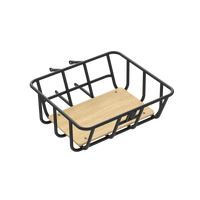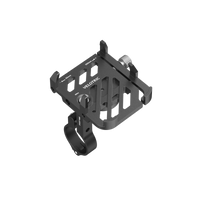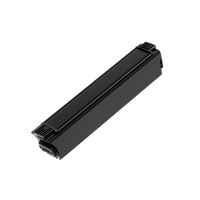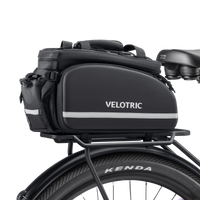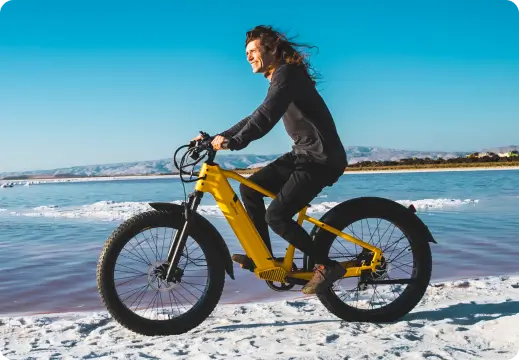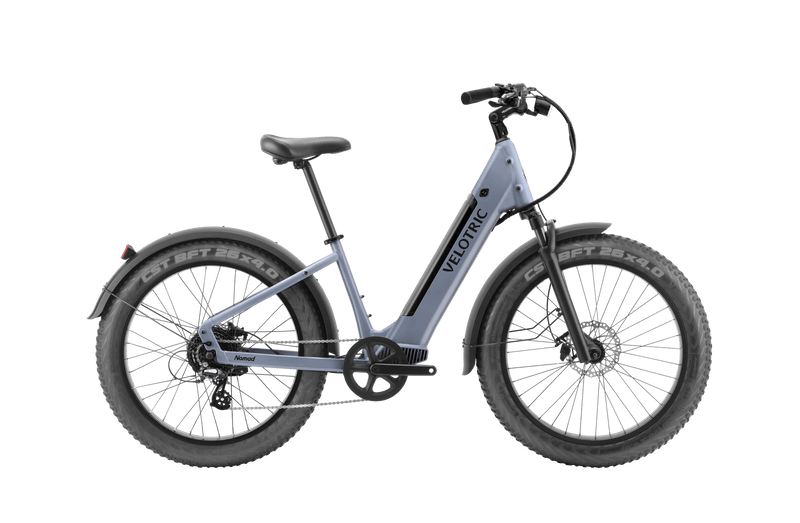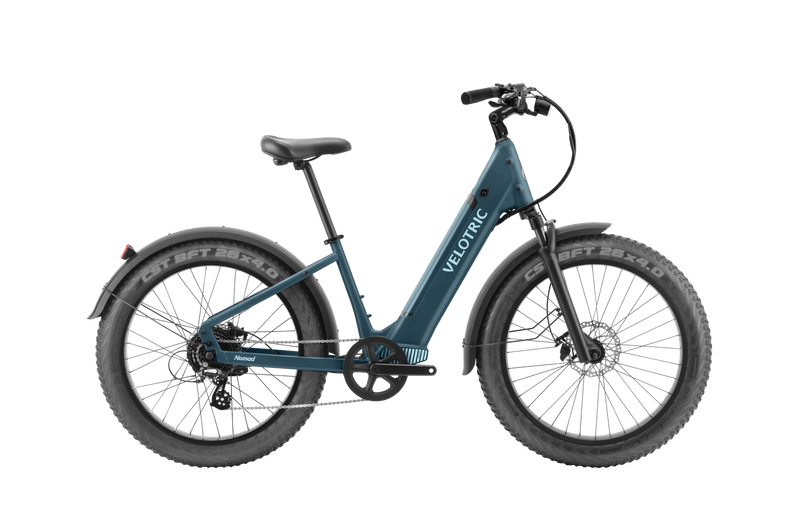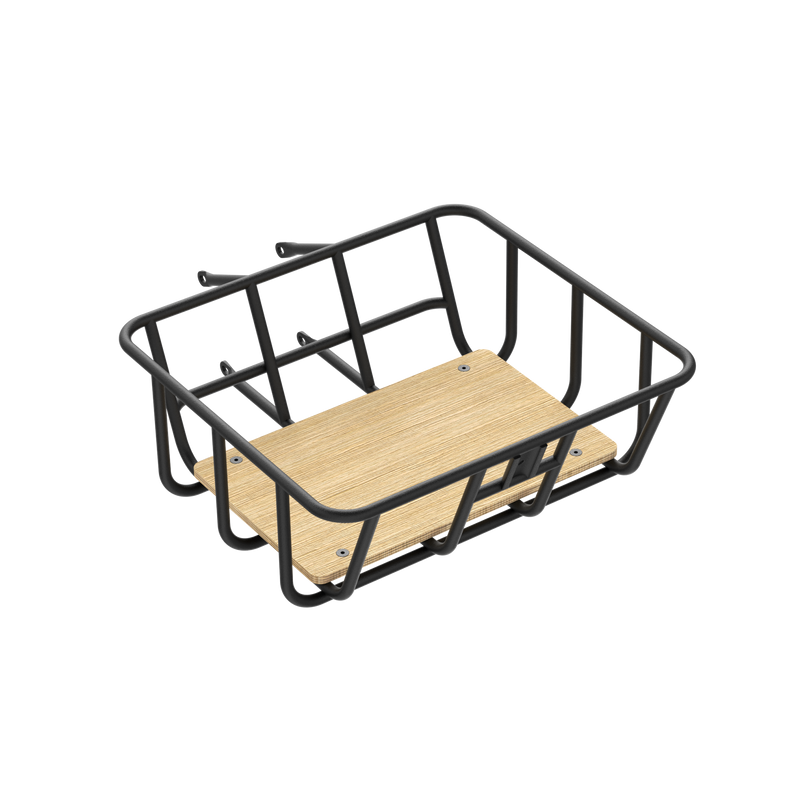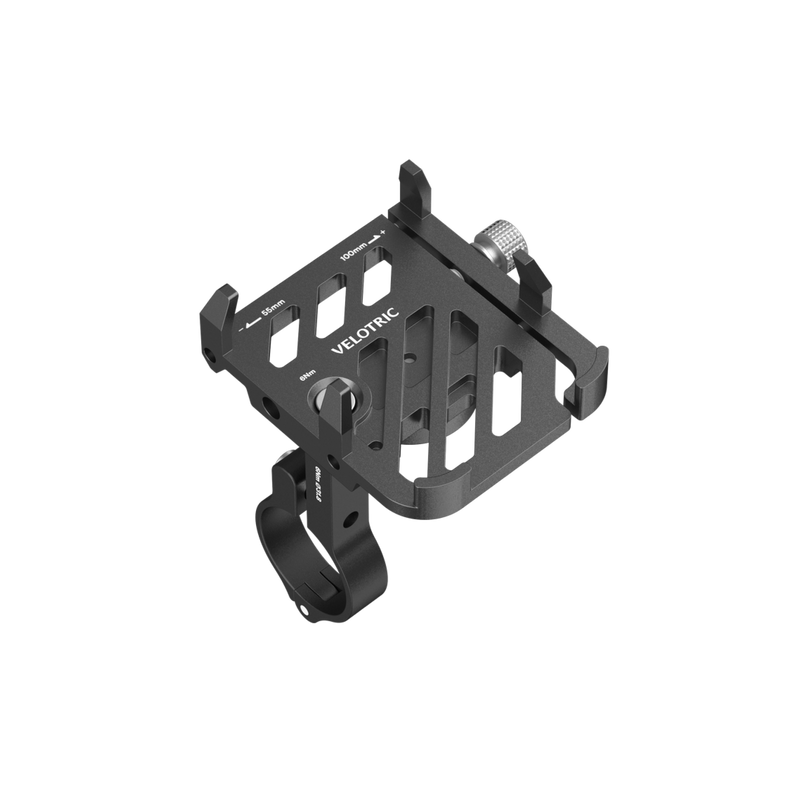Delivery driving is an in-demand job these days, with faster-than-average growth expected in the future. If you work as a delivery driver, you've got excellent job prospects — which is great news!
Delivery driving can be especially lucrative in cities with dense urban populations.
In the city, you've got lots of people within a small geographical area clamoring for food delivery from Uber Eats, DoorDash, and GrubHub — or ordering packages from delivery companies like Amazon.
More customers = more deliveries = more money for you!
Want to really maximize your potential earnings as a delivery driver? You might want to get an electric bicycle.
An e-bike can help you complete your deliveries more quickly, meaning you could potentially pack even more jobs into a single day, upping your earnings.
Read on to learn more about the advantages of electric bikes for delivery drivers — and to find out what to look for when choosing a bike for this purpose.
Are electric bikes good for deliveries?
Maybe you already use a standard bike for delivery and are thinking "Why change a good thing?! My bike works for me!" Hear us out.
E-bikes offer a few unique advantages that can make them preferable for delivery drivers. Below are some things e-bikes can do for you:
- They help you make deliveries faster. What sets e-bikes apart from standard bikes is the motor. The e-bike motor powers a pedal assist system (PAS), which helps to move the bike forward when you're pedaling. Different e-bikes have different levels of pedal assist. For example, Velotric's Discover 1 and Nomad 1e-bikes both have five-level pedal assist. Delivery riders can go more quickly, hitting more stops in less time — earning more as a result.
- Save your energy. Pedal assist takes some of the burden off cyclists. You don't have to pedal as strenuously to keep moving. This can also be useful when you’re going up hills (let's face it, an uphill ride can be a killer)! Some e-bikes also have throttle assist, which powers the bike forward even when you aren't pedaling. Both Velotric's Discover 1 and Nomad 1 have throttle assist.
- Protect the environment. Some delivery drivers use cars to get their job done. Unfortunately, a standard car creates carbon emissions, which aren't great for the environment. With an electric vehicle like an e-bike, you reduce your carbon footprint and do your part to protect our planet.
- Minimize maintenance needs. Another drawback of using a car for delivery is that they require regular maintenance, which can get costly. A tune-up alone can cost $150 — or even as much as $800, depending on what it includes. And that doesn't even take into account potential repairs. E-bike maintenance is usually less involved and less expensive than the upkeep of a car.
- Save money. E-bikes can help you save money on maintenance and gas expenses. Plus, you won't have to worry about paying for parking (or parking tickets)! E-bikes are also a cost-effective investment in the long run. You can get affordable models for around $2,000 these days — and some states offer rebates and tax incentives for e-bikes.
- Get a workout. Finally, an e-bike is a great way to get in a workout while you're on the job. One study shows that riding an e-bike provides a level of physical activity comparable to that of riding a standard bike. The activity is considered "at or near moderate intensity," meaning it will still give you a cardiovascular workout (and put your leg muscles to the test as well!). To maximize your workout, set the pedal-assistance as low as possible.
Is it legal to use e-bikes for deliveries?
There are some rules surrounding e-bike use. Yes, you are legally allowed to use an e-bike for delivery purposes. However, in most municipalities, e-bikes are not allowed on sidewalks. You'll have to use bike lanes or streets when you ride them.
Additionally, there may be limits on how fast e-bikes can go. There are three classes of e-bikes, with different motor capacities and top speeds (more on that below).
A throttle-assisted e-bike that's being powered by the motor alone can't exceed speeds of twenty miles per hour, for example.
However, U.S. law doesn't specify a maximum speed for pedal-assisted cycling (when the motor is helping to power the e-bike but the cyclist is still pedaling). According to the U.S. Consumer Product Safety Commission, e-bikes can travel more than 20 mph if they are powered by a combination of motor and human power.
That being said, guidelines vary by locations. Make sure to check your city and state's rules for details.
Finally, some states have helmet laws governing e-bike riders. Make sure to check your area's guidelines. This roundup of state-by-state laws can help.
What to look for when choosing an e-bike for deliveries
Are you ready to enjoy the benefits of an e-bike for your delivery driver job? Here's what to look for when getting an electric bicycle.
The class of e-bike
E-bikes have four main classes. The class of e-bike impacts its motor power and maximum speed — and, therefore, the laws regarding the e-bike's use (like where it can be ridden). Here's a quick roundup of the main classes:
- Class 1: Class 1 e-bikes, also known as pedelecs, can't go faster than 20 mph. They don't have throttle assist, so they work only if you're pedaling. Class 1 e-bikes are usually allowed on bike paths/lanes (although laws can differ depending on the location).
- Class 2: Class 2 e-bikes can't go faster than 20 mph. However, unlike Class 1 models, they have throttle assist. This means they can move forward even when you aren’t pedaling. In most places, class 2 bikes are allowed on standard bike lanes/paths.
- Class 3: Class 3 e-bikes can go up to 28 mph. Some have throttle assist, while others don't. Some states, including California, don’t permit class 3 e-bikes to have throttle assist. A class 3 e-bike must include a speedometer, for instance via an LCD display. These e-bikes usually are not allowed on regular bike paths/lanes. You’ll have to ride them on bike-only shoulder lanes or the road.
- Class 4: Class 4 e-bikes have extra high-wattage motors ranging from 1,000 to 3,000W and don't have maximum speeds. They can use PAS or throttle assist, and most municipalities classify them as equivalent to an electric scooter or moped. This means you can't ride in bike lanes, and you'll also likely need a license and registration for the e-bike.
Consider local regulations when deciding which e-bike class is right for you.
For example, at first glance, you might think a class 3 or 4 e-bike is ideal, because it goes the fastest. However, you won't be able to use bike lanes while riding these e-bikes, and that can be a pain.
A class 2 e-bike offers greater versatility, as it can be used in bike lanes (again: check your local laws to make sure).
Plus, a class 2 e-bike still gives you plenty of speed (20 mph) and can include not only pedal assist functionality but also throttle assist. In short, a class 2 e-bike ticks all the boxes.
Velotric's Nomad 1 and Discover 1 are both class 2 e-bikes. Both models have five-level pedal assist and throttle assist.
Battery life
Your e-bike's battery is the heart of the vehicle, powering the motor that helps engage the PAS and throttle assist. The battery needs to be recharged regularly to keep the e-bike running.
Battery life is a big consideration for delivery drivers. You don't want to be halfway through your deliveries only to have your e-bike shut down on you! You want a battery that's powerful enough to get you through a shift.
Here's the thing though: It's hard to describe e-bike battery life in terms of hours. Why? Many factors impact how quickly the battery drains, such as how frequently you engage PAS or throttle assist, how fast you ride, and how strenuous the ride is.
For example, going uphill will drain the battery faster. Adding more weight to the bike (like all your delivery boxes) can also drain the battery.
To assess battery capacity, it's advisable to look at the bike's range. This will tell you how far the bike can go before the battery is drained (this is assuming "normal" riding without lots of hills and added weight).
In general, the greater the battery capacity, the longer the range. For example, the distance covered by a 3,000Wh battery will be greater than the distance covered by a 400Wh battery.
Velotric's e-bikes come with a 48V 14.4Ah battery that's certified by Underwriter's Laboratories, a global safety standards organization (UL 2271).
The Discover 1 has a range of up to 65 miles, while the Nomad 1 has a range of up to 55 miles (slightly less because the fat tire e-bike is heavier). Best of all, the Tesla-grade lithium-ion battery charges completely in just six hours with the Velotric charger.
Power
The motor impacts what level of pedal assist the e-bike offers, if it offers throttle assist, and how fast it can go. The motor power also helps determine the e-bike's class (see the above list).
When picking an e-bike class for delivery purposes, consider whether you want both throttle assist and pedal assist. Also think about where you want to ride; for example, a super powerful Class 3 or Class 4 e-bike motor can be tempting because it means higher speeds, but you won't be able to ride in bike lanes.
This guide to e-bike motors has more details about e-bike classes and their respective motors.
Velotric's Nomad and Discover e-bikes come with five-level pedal assist and throttle assist. The Discover 1 has a 500W/900W rated/peak motor, which means it can maintain speed at 500W and peak at 900W. Meanwhile, the Nomad 1 has a 750W rated motor.
Weight
The heavier a bike is, the more unwieldy it is and difficult to maneuver. As a delivery driver, you may prefer a lighter bike. This can be especially true if you ever have to lug your bike up and down stairs.
The good news is that e-bikes have different frames, some more robust than others.
For example, the Velotric Discover 1 is a "step through" model (more on what that means below). Step-through bikes tend to be heavier than the alternative, a "high-step" model like the Nomad 1.
Frame type
There are two types of e-bike frames: step-through and high-step. A high-step bike has a triangle- or diamond-shaped frame, thanks to an extra frame tube that runs from the front, under the handlebars, to the seat post under the bike seat.
You might think that the extra frame tube on a high-step bike means it's heavier. In fact, high-step models tend to be lighter than step-through models. This is because high-step models have the extra frame tube for added stability; they therefore don't require as robust a construction as a step-through bike.
Apart from weight, another big differentiator between high-step and step-through bikes is the way you get on and off of them. With a step-through model, you can simply step into the frame to straddle it and get on the seat.
With a high-step model, because of the extra frame tube at the top, you have to lift a leg and hoist it over the bike to get on. This can be inconvenient for delivery drivers who have to get on and off their bikes frequently throughout the day.
Velotric's Discover and Nomad bikes both come in high-step and step-through frames. The high-step frames are suitable for riders with heights of 5’1” to 6’4" while the step-through frames are suitable for riders with heights of 5’6” to 6’9”.
Learn more about bike frames and how to choose one that's right for you.
Lighting & safety features
As a delivery driver, you'll spend a lot of time on your electric delivery bike. After all, it's your job. You want to make safety a top priority. Look for bikes with essential safety features like front and rear lights, high-quality brakes, and quality production.
Velotric's bikes deliver on all counts. The Discover 1 and Nomad 1 come with hydraulic disc brakes and a braking high-beam rear light. You can also get front, rear, and wheel reflectors for added visibility at night.
Last but not least, the bike frames have been rigorously tested to ensure your security. With these specs, you can ride with confidence.
Discover the best e-bikes for deliveries from Velotric
Ready to start making deliveries via e-bike? Velotric has the bike for you. The Discover 1 has a long range of up to 65 miles, while the Nomad 1 has a mile range of up to 55 miles, giving you plenty of opportunity to complete all your deliveries.
These class 2 e-bikes provide lots of speed, going up to 20mph, and offer both pedal and throttle assist. You'll be able to make more deliveries, faster, without getting as tired.
Velotric's bikes also feature high-step and step-through frames, so you can pick the option that's most comfortable for you. Finally, the rear rack is great for storage — a must for the best electric bike for delivery riders.
Book your test ride and find your perfect delivery e-bike today.























